Alocasia spp.
I’ve always been one who favors the easy-care houseplants – low-maintenance succulents and pothos and such. It takes something special to ease me out of my comfort zone.
Alocasia is just such a plant. Its oversized “elephant ear” leaves and tropical vibe are so appealing, I willingly put in the extra work this slightly picky foliage requires.
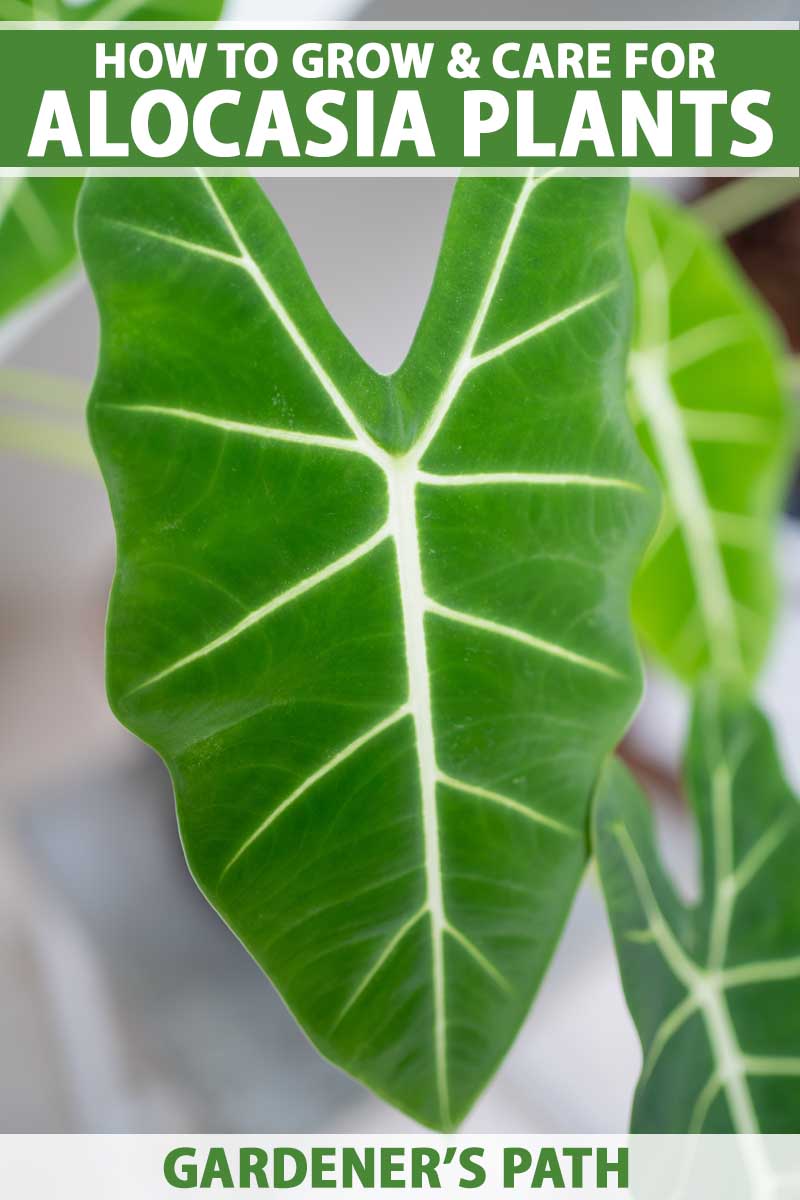
We link to vendors to help you find relevant products. If you buy from one of our links, we may earn a commission.
What’s a little extra watering and creating a humid oasis here in the dry air of my home when such beauty and drama are the results?
Described with various common names including African mask, giant taro, kris plant, and elephant ear, Alocasia species boast big, beautiful leaves that would be at home in the tropics, which is where they originated.
And that’s what makes them a little tougher to grow and care for than the average pot of philodendron or spiderwort. They need conditions that mimic the areas where they’re native.
A few of their growing requirements include humidity of at least 50 percent, home temperatures of 60°F or higher, and plenty of bright, indirect light.
If creating that environment indoors sounds like something you’d be willing to do, won’t you let me introduce you to some of the dramatic varieties in this genus?
Once you’re more familiar with what these plants have to offer, I’ll also share tips on accommodating their specific growing needs.
Here’s what I’ll cover:
What You’ll Learn
What Is Alocasia?
Plants of the Alocasia genus are native to Southeast Asia, southern China, and eastern parts of Australia.
They display their tropical origins with showy leaves in a variety of patterns and textures, and a fondness for bright, indirect light and lots of humidity, similar to what they’d receive in the understory of the rainforest.
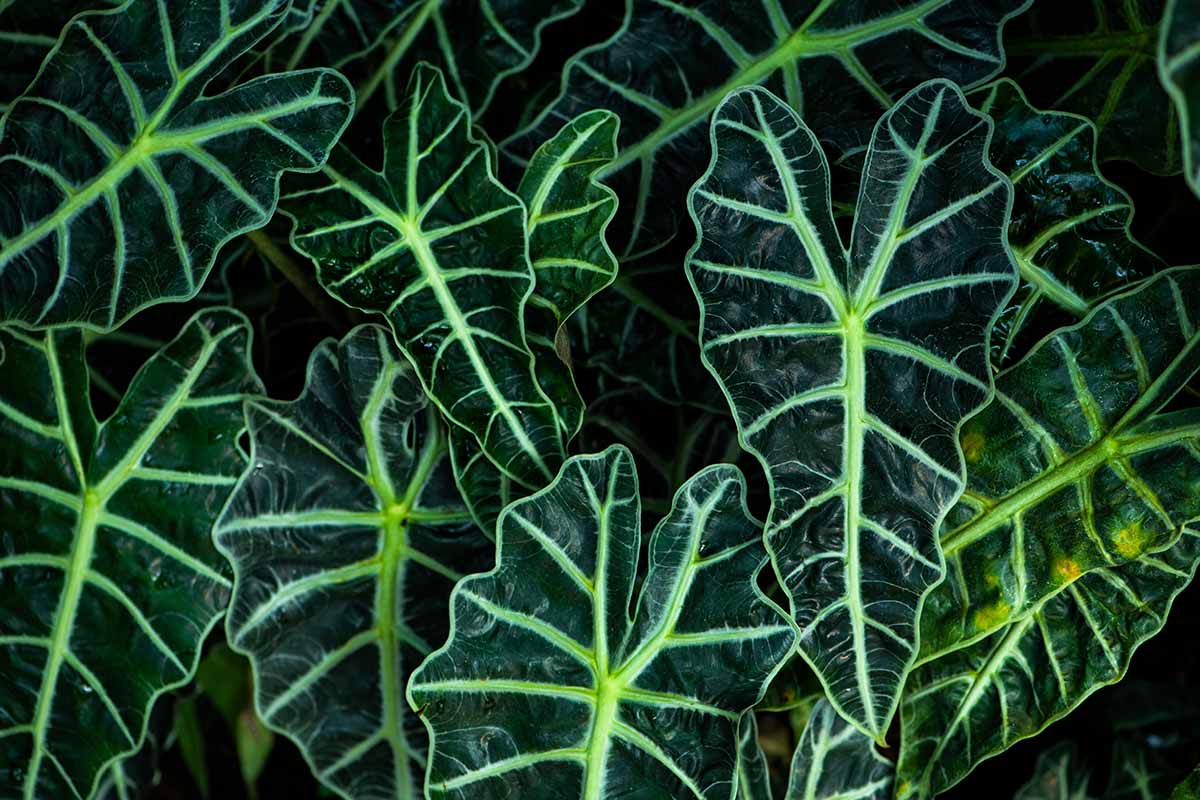
The genus contains 97 recognized species, though most of those available to casual indoor gardeners are often referred to as “jewel” varieties – compact plants that grow to a couple of feet tall in a home environment.
Alocasia is beloved by houseplant enthusiasts for its impressive foliage – bright or dark green leaves that can approach a foot long, with angular shapes and heavy veins of either green or white.
Some varieties have silvery foliage with deep green leaf edges and veins, and others feature variegated leaves.
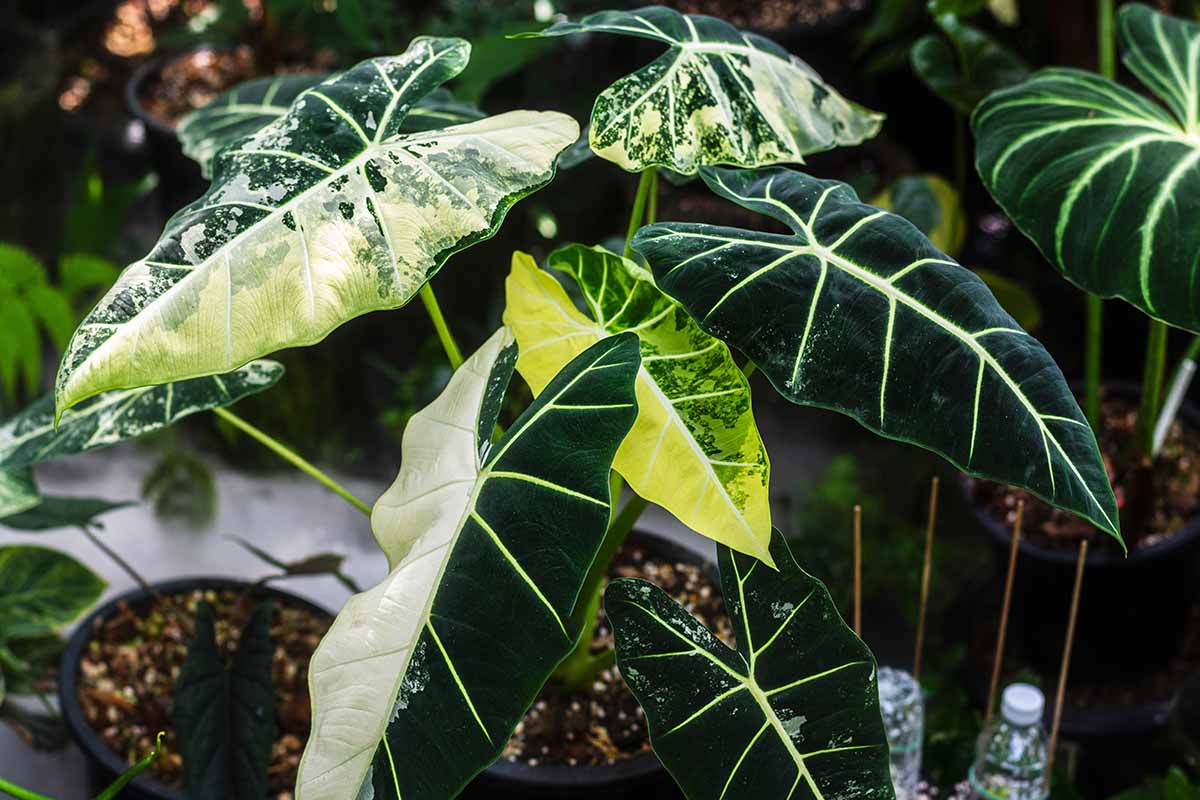
An endearing part of their growth habit is the way the clumps of leaves grow vertically instead of sending out horizontal runners, like many plants that originated in the tropics do.
When grown outdoors, these plants bloom in the spring sending up an inflorescence consisting of a central stalk known as a spadix surrounded by a spathe, similar to that of a peace lily. They rarely flower indoors, however.
Like friends you’ve had for decades, or your beloved dog, alocasia goes by many different nicknames, including African mask, kris plant, and elephant ear.
It shares that last common name with a number of other ornamentals, including members of the Colocasia and Xanthosoma genera.
Alocasia, Colocasia, and Xanthosoma belong to the aroid or Araceae family, and have similar growth habits.
Xanthosoma is also tropical, but it is native to South and Central America.
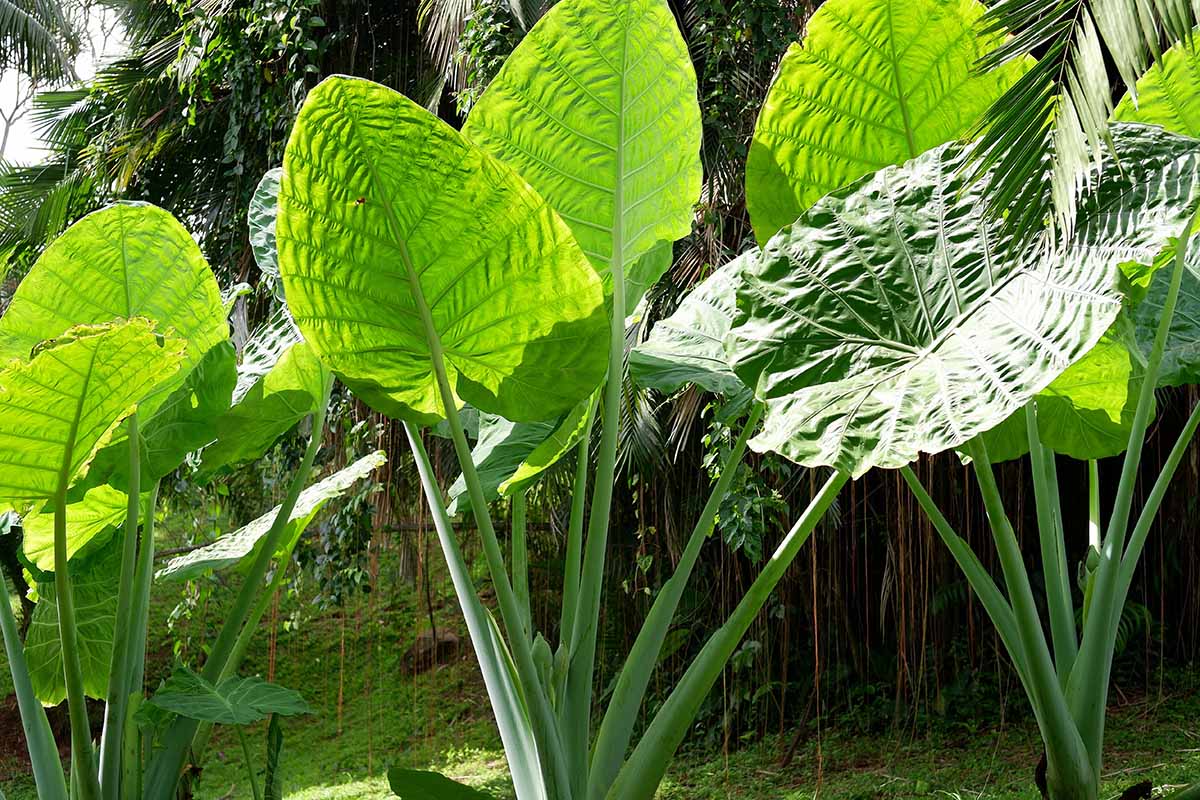
Alocasias can be cultivated as outdoor perennials in USDA Hardiness Zones 8b to 11, and they can reach six to 12 feet when grown in ideal conditions in landscapes or gardens, depending on the species.
In this guide, we’ll focus on growing Alocasia elephant ears indoors, or as potted outdoor specimens that overwinter inside in the chilly months.
This genus offers drama in a potted plant.
Just a few of the possibilities include A. infernalis aka “black magic,” with shimmery purple-black leaves; A. odorata var. variegata, with heart-shaped leaves flecked with different patterns; A. x amazonica, a hybrid with shiny, arrow-shaped leaves and intense veins; and A. sanderiana, aka the kris plant or Sander’s alocasia, featuring dark green, glossy leaves with wide white margins and leaf veins.
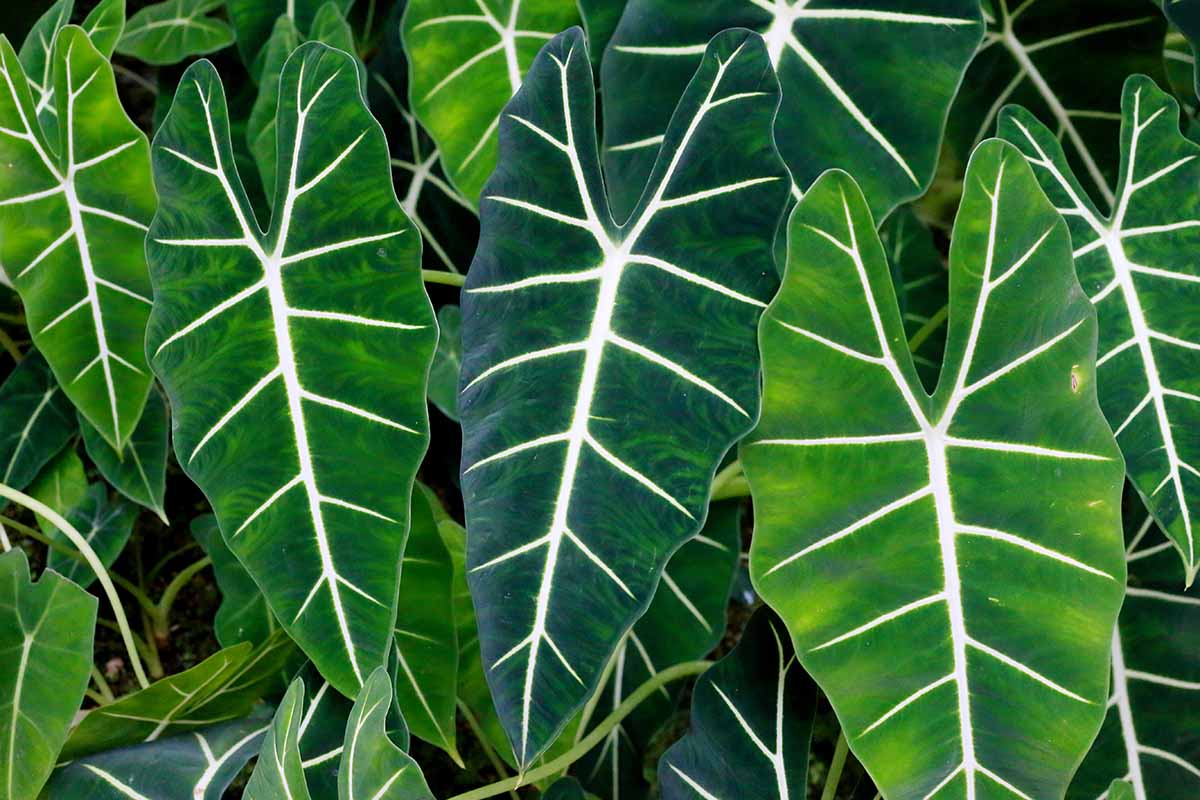
One that I long to add to my collection is A. macrorrhizos ‘Stingray,’ a giant taro cultivar. It has striped or mottled markings on its upright stems and ribbed leaves that feature a tail on the ends that is reminiscent of a stingray.
It grows three to five feet tall – no aquarium required, unlike its namesake.

A. zebrina also features stems with dark green or brown stripes, and arrow-shaped leaves.
Growing any of these types may involve a few more cautions and extra steps than you’re used to seeing when you seek pointers on growing houseplants that are simpler to care for.
I know this firsthand and can only say – it’s worth that extra work!
Nurturing this tropical plant in my own home has required me to set up an area with more consistent light, and higher humidity than my typical succulents require, for example.
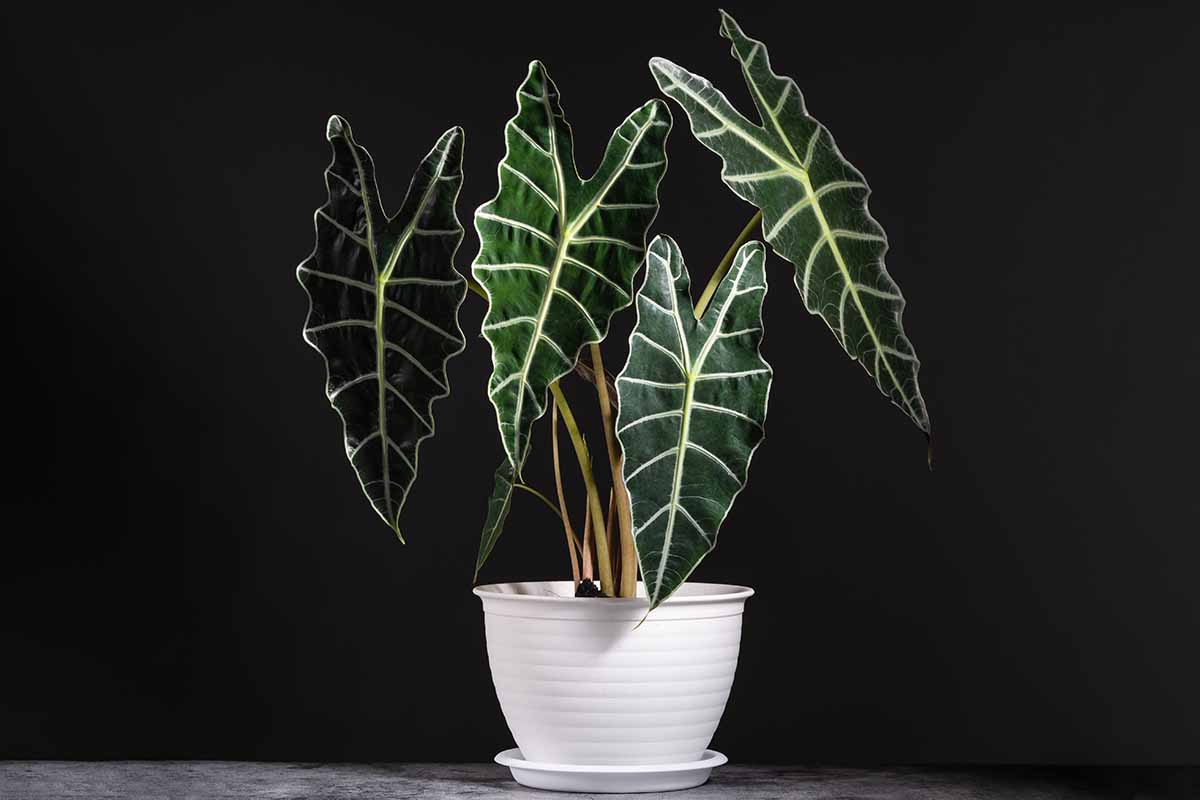
But my reward has been a dramatic kris plant to enjoy indoors. And it is a stunner, with boisterous, oversized leaves and a tropical vibe you just can’t get from a tiny pot containing a more modest specimen.
If caring for this sort of houseplant sounds like a bit of a stretch for you, welcome to the club. Read on for tips that will make the process of growing and caring for elephant ears more manageable.
A Note of Caution:
The insoluble calcium oxalate alocasia contains makes the leaves and stems toxic to humans, dogs, cats, and horses.
In addition, it can cause skin irritation, so it’s advisable to wear gloves when handling these plants.
To be safe, only grow alocasia where curious pets and children can’t reach it.
Alocasia Plant Propagation
Because the leaves sprout from a central rhizome, you won’t be able to propagate Alocasia by rooting stem or leaf cuttings.
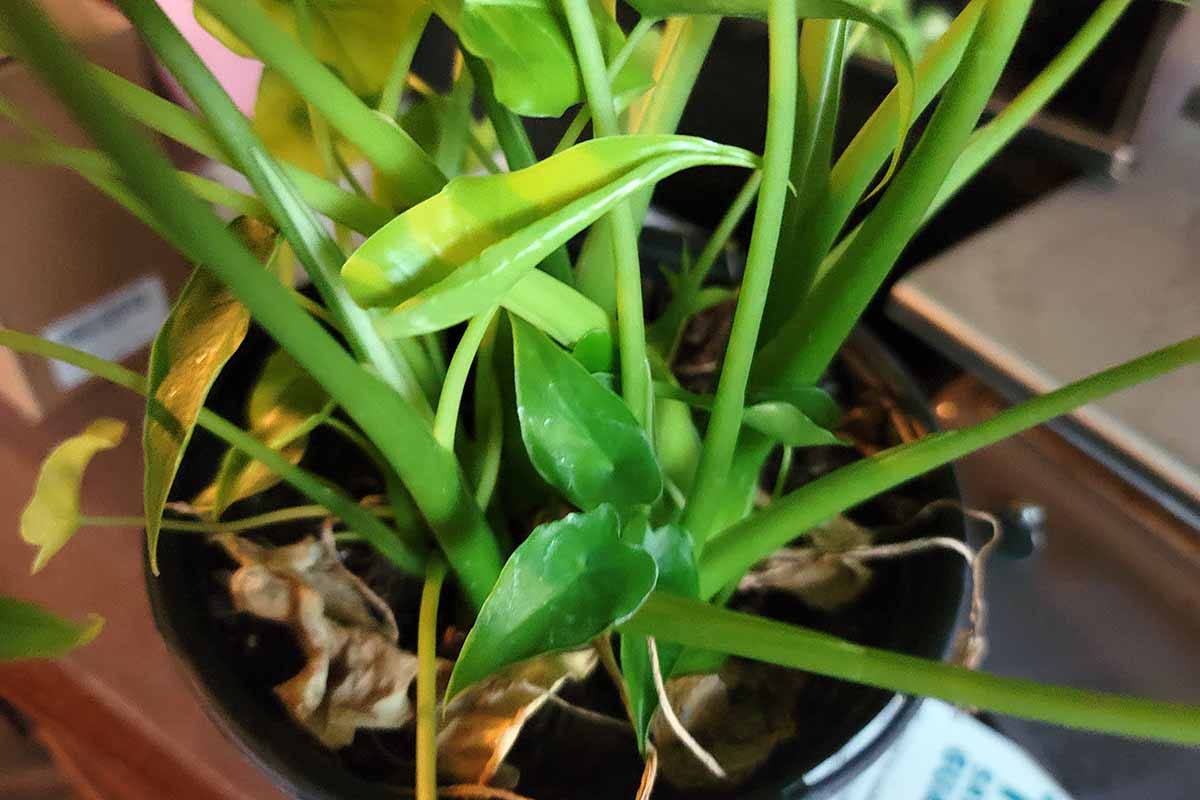
It is possible to propagate the tiny corms that grow at the base of the rhizome, but I wouldn’t recommend this method.
It’s unreliable and tedious, taking many months and not necessarily yielding any new plants.
From Divisions
Happily, there are only a couple of steps involved in propagating alocasia from divisions.
If you have a friend with a kris plant or an elephant ear of your own that’s spreading via rhizomes, growing new specimens from divisions is the way to go.
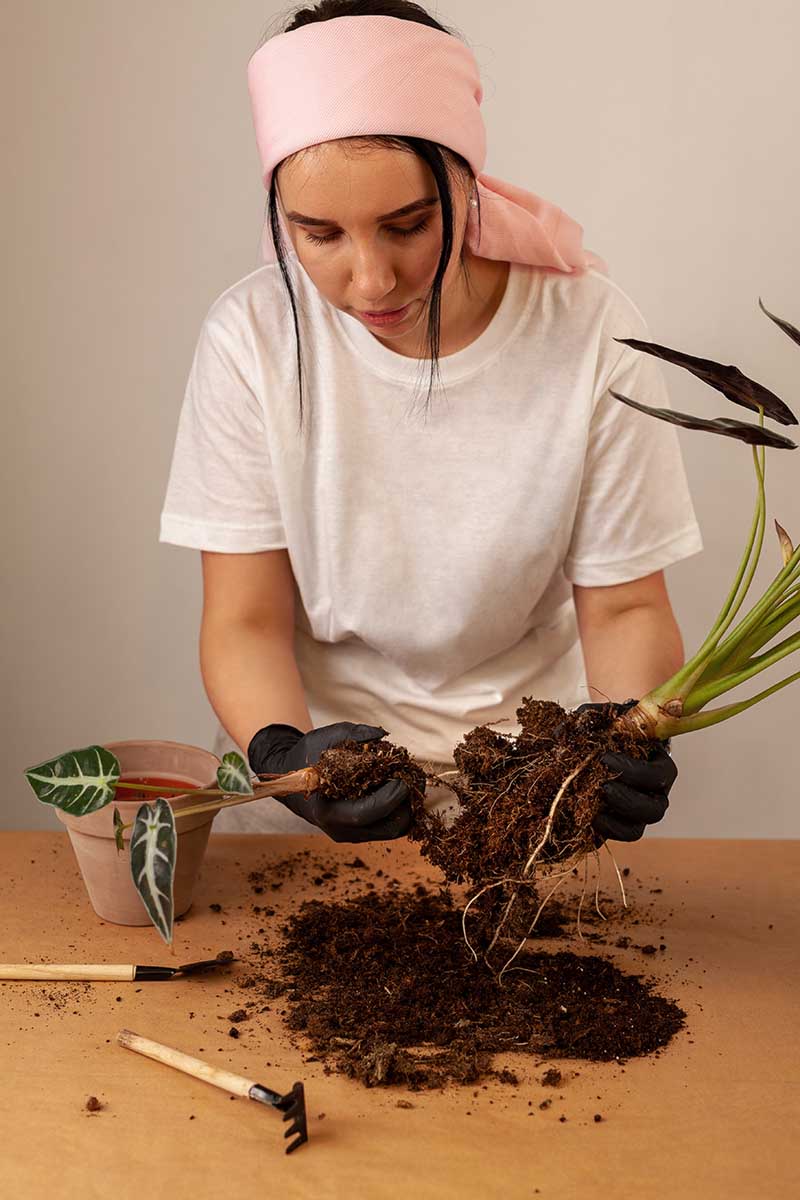
This chore is best completed when the plant is coming out of its winter dormancy.
But if you can see roots growing from the drainage holes in the plant’s container, you can go ahead and repot, and grab any offshoots that have two or more leaves at the same time.
To separate offshoots, ease the entire plant from the pot with one hand, holding it over a tabletop covered with newspaper or an empty, clean sink.
Using your free hand, tease out any offshoots that are already separate from the parent or that can be disentangled readily. Be sure to keep the rhizome and roots intact with each clump.
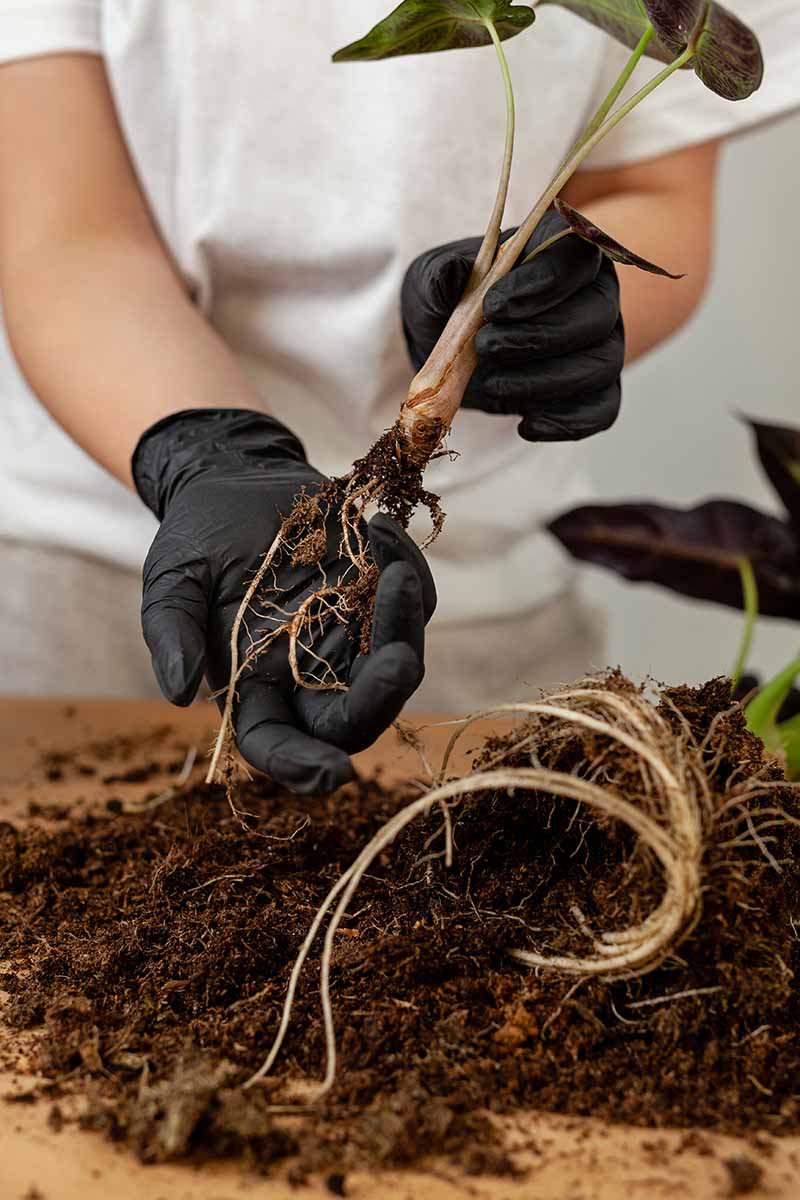
For clumps that are entangled with the roots of the parent plant, use a sharp, clean paring knife to cut them away from the main rhizome. Make sure to keep the roots of each clump connected to the crown.
Plan to pot the severed or separated offshoots right away. Read on for more specific directions.
Transplanting
Before you purchase a plant from a local nursery or retailer, make sure to pick up one that has a healthy color.
Avoid any that have discolored leaves, which could indicate a pest problem or that it’s been growing in substandard conditions.

While it’s a natural part of aging for Alocasia to drop a few leaves each year, lots of dry, predominantly brown stems or foliage are sure signs of a plant that’s on its way out.
Also, check the drainage holes at the bottom of the pot to make sure the roots don’t have an off smell. If they’re slimy and brown or smell a bit like a full diaper, pass on that one. It may already have a case of root rot, which is fatal.
If you’ve purchased an alocasia online, be sure to schedule the delivery for a time when you’re at home so you can immediately unpack the specimen and get it into an ideal environment.
Most online suppliers will include directions for caring for the plant upon arrival, including whether it should immediately be repotted or given water or not.

This process will vary a bit depending on how the grower packs the alocasia and how long it takes to reach you.
A healthy specimen can usually stay in its grower’s pot for a few months. Alocasia is content in snug quarters.
If you notice a lot of offshoots or the soil is drying out quickly, it may be time to place the purchased plant in a new pot.
Whether you’re potting up offshoots you’ve separated yourself or transplanting or repotting a purchased specimen, the method is essentially the same.
Be sure to choose a fast-draining soilless mix formulated for indoor plants.
One good choice is Miracle-Gro Indoor Potting Mix, which is available from Home Depot in 16-quart bags.
Miracle-Gro Indoor Potting Mix
For more specifics on choosing the right soil for houseplants, see our guide.
You’ll also need a pot with drainage holes and a saucer to catch excess water as it drains out. The container should be about two inches wider on all sides than the transplant.
Fill the container about a third of the way with the mix, then place the transplant in position.
Some settling when you water is normal, so you may want to moisten the soil gently with tepid water at this point and let it drain before you add your plant, so it will be easier to position it at the right height.
Fill in with more soilless mix to within about an inch of the rim so the crown of the plant sits about an inch above the soil surface, and gently tamp it down with your fingers.
Place in a warm area that receives bright, indirect light with ample humidity, just like a mature specimen requires.
How to Grow Alocasia Houseplants
It really pays to anticipate the needs of these plants ahead of time, before investing in one of your own.
If you can meet its demands, you’ll have a beautiful tropical specimen to look forward to. First, consider the following:
Temperature
Alocasia species grow best at temperatures of at least 60°F and will suffer and start dropping leaves when the temperature is lower than 50°F.
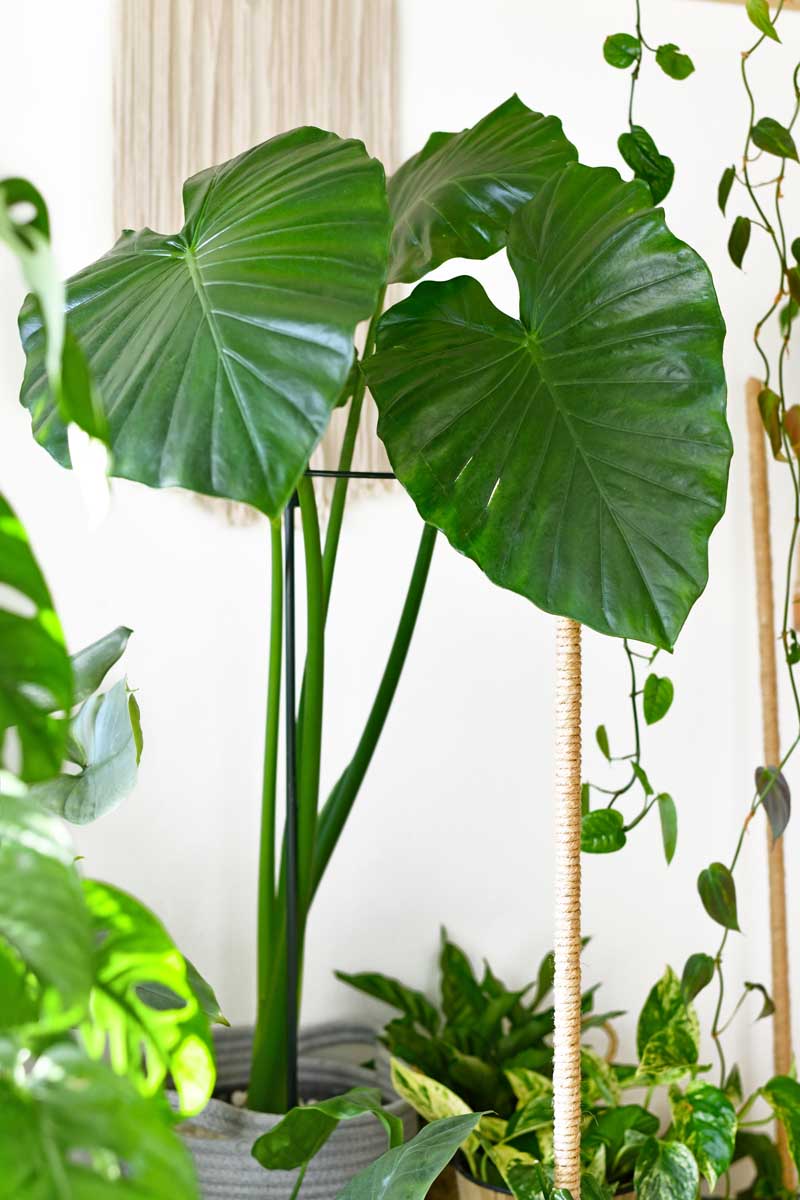
If they’re exposed to more than a day or two of temperatures below 50°F, they might out and out die on you.
Light
Elephant ears need at least four hours per day of bright light, but direct sunlight should be avoided. Intense, direct light can lead to leaf scorch and drooping.
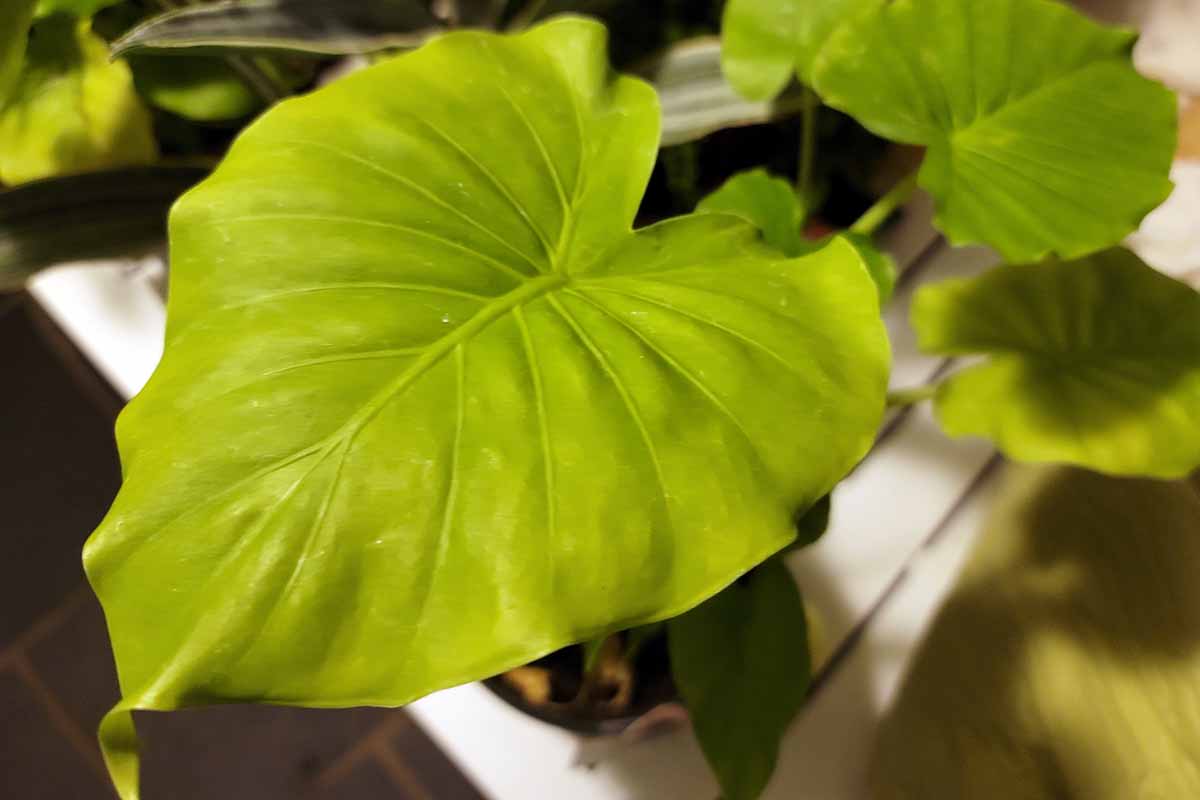
If your home doesn’t offer enough indirect natural light, you may want to consider using grow lights for at least part of the day.
Humidity
This tropical beauty would really appreciate at least 50 percent humidity in its growing environment, which can be tough to achieve in a typical household.
To grow one at home, you may need to employ frequent misting, add a shallow tray of water and pebbles beneath the pot, or even use an electric humidifier.
Watering
While they can’t tolerate wet feet or standing water, Alocasia species do need consistently moist soil. Water when the surface feels dry to the touch, but make sure it doesn’t get waterlogged.
The soil should be slightly moist at all times, not oversaturated.
Airflow
Make sure containers are placed a good six inches apart and away from walls for ample air circulation that inhibits disease and promotes healthy growth.
Avoid locations where they’ll be hit by cold drafts, or windy spots outside. They’ll languish on a chilly windowsill or near a drafty fireplace.
Growing Tips
- Grow in fast-draining soil in containers with drainage holes.
- Choose a spot where they’ll receive ample bright light but where direct sunlight won’t damage the leaves.
- Maintain humidity levels of at least 50 percent.
- Reduce watering in the fall and winter when plants are dormant.
Maintenance
You can relax a bit once your alocasia is established in a hospitable growing environment, but you’ll need to keep up the good work with a few maintenance chores, particularly if you’ve opted to bring your potted plants outdoors for the summer.
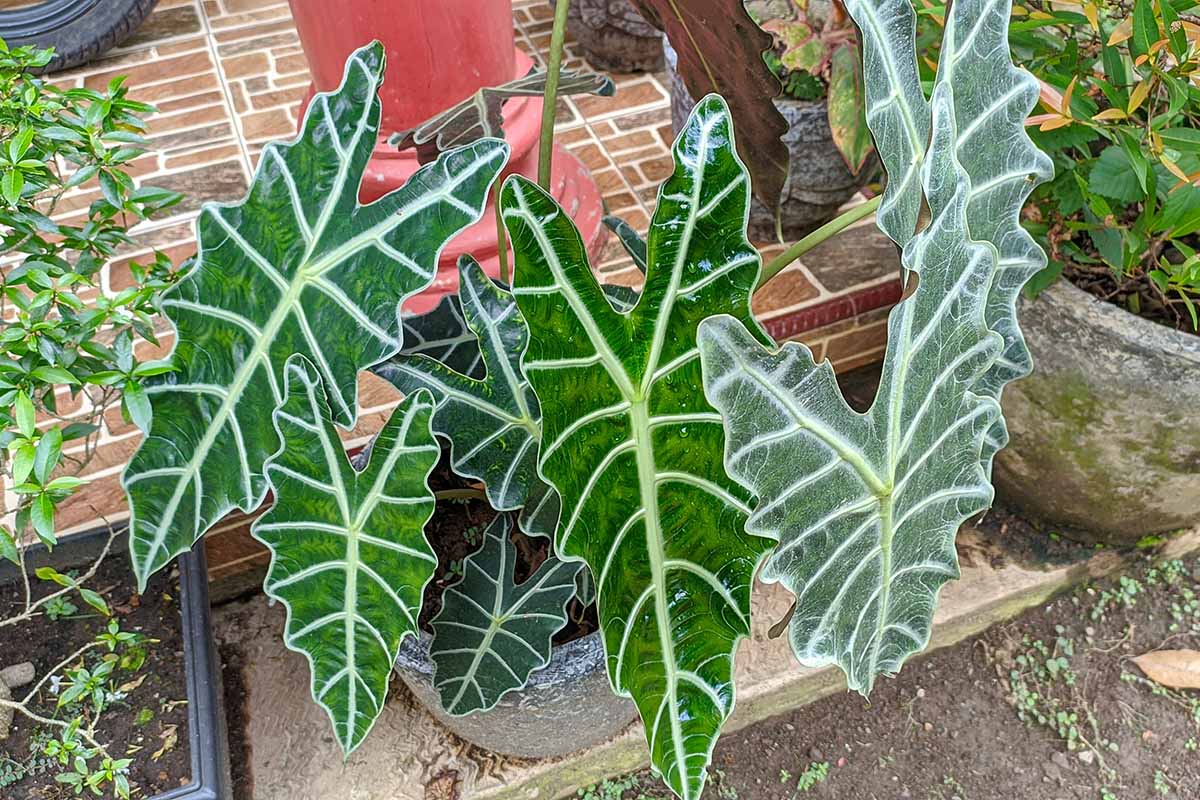
Pay attention to weather trends and diligently move your plants back inside ahead of cool temperatures that will harm them.
It’s best to be proactive, and move them as soon as temperatures dip below 60°F. While they’ll probably live through several weeks of temperatures in the mid- to upper-50s, it’s probably not worth the risk.
If you track weather patterns throughout the year in your area, make a note in your gardening journal so you’ll have an idea of when to bring these babies back indoors. As the usual change in the weather approaches, start checking the daily forecast.
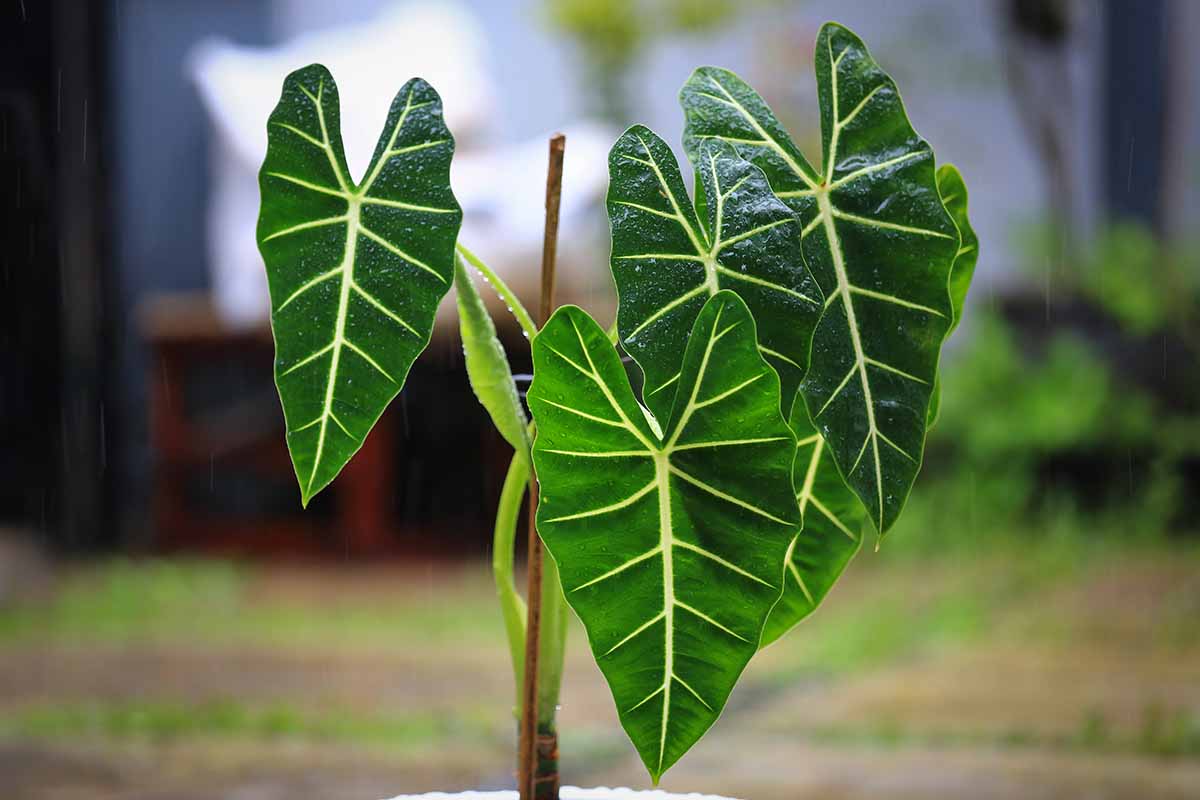
Planning ahead also gives you time to check for signs of pests or disease before bringing plants back in.
After plants have spent the cold months indoors, make sure to give them a few days of gradual exposure to the outdoors when it’s time to move them back outside again.
They can be shocked by an abrupt transition from warmth and artificial light to lower temperatures and stronger light outside the house.
As for other maintenance chores, you won’t usually need to prune alocasia, but you should go ahead and clip off any dead or dry leaves when you see them.

When they’re a couple of years old, these plants will need repotting, but don’t rush it. Alocasia likes to be a bit snug in its pot.
When it’s time, you may note that roots are growing out of the drainage holes or that the soil no longer absorbs water as readily.
Be sure to only move to a pot that’s a size larger than the previous one, about an inch or two wider on all sides.
And be sure to gently knock loose the old potting mix from the roots during the transition. Alocasia appreciates a soil refresh every two to three years.
Alocasia Species and Cultivars to Select
Most of the varieties you come across at local retailers or online will be jewel types, meaning that they’re smaller and highly suitable for growing indoors, either year-round or in the cold months in Zones 4 to 8a.
Here are a few to get you started:
Black Velvet
A. reginula, lives up to its common name “black velvet” with green-black, distinctly veined leaves that have a velvety texture.
As an added bonus, they sport purple undersides if you care to take a peek.
Appropriate for small spaces, A. reginula reaches one to two feet tall and spreads about two feet wide.
Plants are available in six-inch pots from Fast Growing Trees.
Kris
A. sanderiana, aka the kris plant, has arrow-shaped leaves that are deeply lobed at the edges. The glossy, dark green foliage has white veins, and can grow up to 15 inches long.
In the landscape, the kris plant can reach up to six feet tall, but indoors, it’s unlikely to attain this size, staying more in the two- to four-foot range.
You can find kris plants in four-inch pots available from Walmart.
Polly
Also known as A. x amazonica, Polly is a hybrid. Its glossy, dark-green leaves can grow more than a foot long. These have angular edges with wide, white veins.
Its max height indoors is generally about a foot, and it will spread five or six inches, making it a fitting option for small spaces like an office or guest bathroom where you might not have enough room for larger tropicals.
Five-inch specimens in either wood or jute pots are available from Fast Growing Trees.
Zebrina
More of a landscape plant that can be grown as a perennial in Zones 9 to 11, A. zebrina aka the zebra plant, can also be cultivated as a sizable tropical houseplant.
With deep green leaves in the shape of arrowheads, its stems are patterned like a zebra’s coat, though the colors are light rust and green rather than black and white.
While these may attain a height of five to 10 feet when grown in the landscape, they’ll typically max out at three or four feet tall indoors.
You can find A. zebrina available in 10-inch growers pots from National Plant Network via Home Depot.
Managing Pests and Disease
Too little humidity, too little light, and temperatures that are too cold are the most threatening foes for tropical alocasia.
These plants don’t often face problems with pests or disease, but there are a few to watch for and prevent when possible.
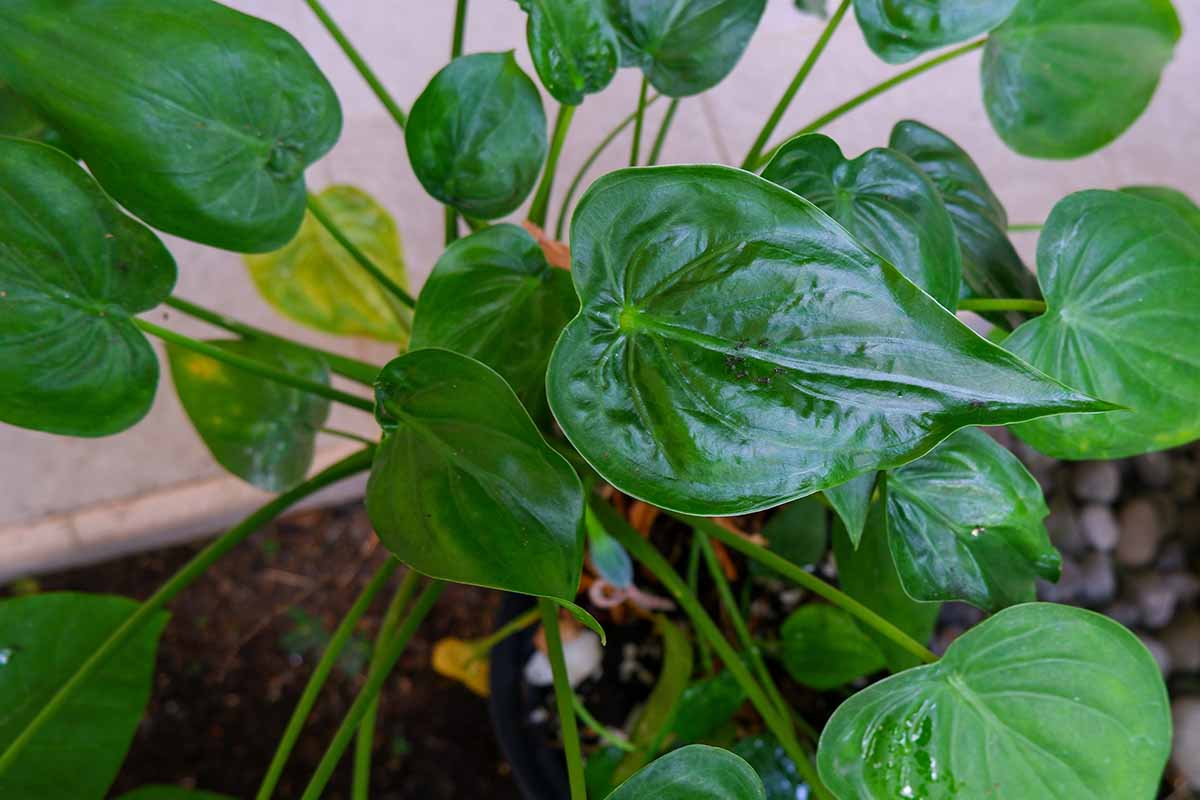
Particularly if your alocasia spends the warm months outdoors, you may encounter mealybugs, scale, or spider mites when they come back inside.
Be sure to check thoroughly and treat any infestations before bringing them indoors to prevent spreading pests to your other houseplants.
Waterlogged soil or poor air circulation bring about most of the noted disease trouble for all Alocasia species. Eliminate those conditions, and you’ll probably have little to worry about.
The most likely issues are powdery mildew, which looks like a fine dusting of flour on the foliage, or root rot.
Powdery mildew is more easily managed. It may succumb to a quick wipe or spray, or an application of neem oil. You can learn more about preventing, detecting, and treating this issue in our guide.
Root rot is more deadly. If you notice foul-smelling or slimy brown roots, it may already be too late to rescue the plant, and plants with this condition should be disposed of.
Planting in fast-draining soil, never letting them sit in standing water, providing adequate airflow, and striving not to overwater your plants are your best options for successful prevention of fungal diseases.
Best Uses
In general, an alocasia plant will usher a tropical vibe into your household.
More specifically, it’s ideal to anchor a corner of a brightly-lit small space, whether that’s a home office with a window or the master bath with a skylight.

While I wouldn’t grow it in a dish garden, since it gets so big, it is suitable as an upright focal point for a collection of potted plants.
Shorter indoor blooming plants like flaming Katy or African violets can act as companions, or you can continue the tropical vibe by placing alocasia next to croton in the home environment.
I find alocasias also offer a welcome change for the type of black thumb gardeners who tend to kill houseplants by overwatering.
If you like to tinker around and water often, alocasia will respond well to frequent splashes of water that will keep the soil lightly moist.
Mind you, it’s still possible to swamp your alocasia buddies, but they’re a fine choice for the indoor gardener who likes to keep the water coming.
Quick Reference Growing Guide
| Plant Type: | Herbaceous perennial | Foliage Color: | Light/dark green with variegation |
| Native to: | Southeast Asia, southern China, eastern Australia | Maintenance: | Moderate |
| Hardiness (USDA Zone): | 8b-12 | Tolerance: | Shade |
| Bloom Time: | Spring and summer (outdoors), rarely indoors | Soil Type: | Soilless potting mix (containers) |
| Exposure: | Bright, indirect light | Soil pH: | 5.5-6.5 |
| Time to Maturity: | 2-5 years | Soil Drainage: | Well-draining |
| Planting Depth: | Crown at soil surface | Uses: | Focal point; houseplant for humid areas (kitchen/bathroom); anchor for tropical plant collection |
| Height: | 2-12 feet (outdoors), 1-6 feet (indoors), depending on species | Order: | Alismatales |
| Spread: | 2-10 feet (outdoors), 1-4 feet (indoors), depending on species | Family: | Araceae |
| Water Needs: | Moderate | Genus: | Alocasia |
| Common Pests and Diseases: | Aphids, leafminers, scale, spider mites; crown rot, leaf spot, powdery mildew, stem rot, root rot | Species: | x Amazonica, baginda, cucullata, cuprea, infernalis, heterophylla, longiloba, macrorhhizos, maharani, micholitziana, odora, portei, rugosa, sanderiana, sinuata, zebrina |
Have You Come Across a Kris Plant?
I’ll always consider elephant ears a welcome upgrade to my indoor garden space.
I’d never recommend them as a candidate for My First Houseplant or as a solution for someone trying to overcome a “black thumb” reputation.
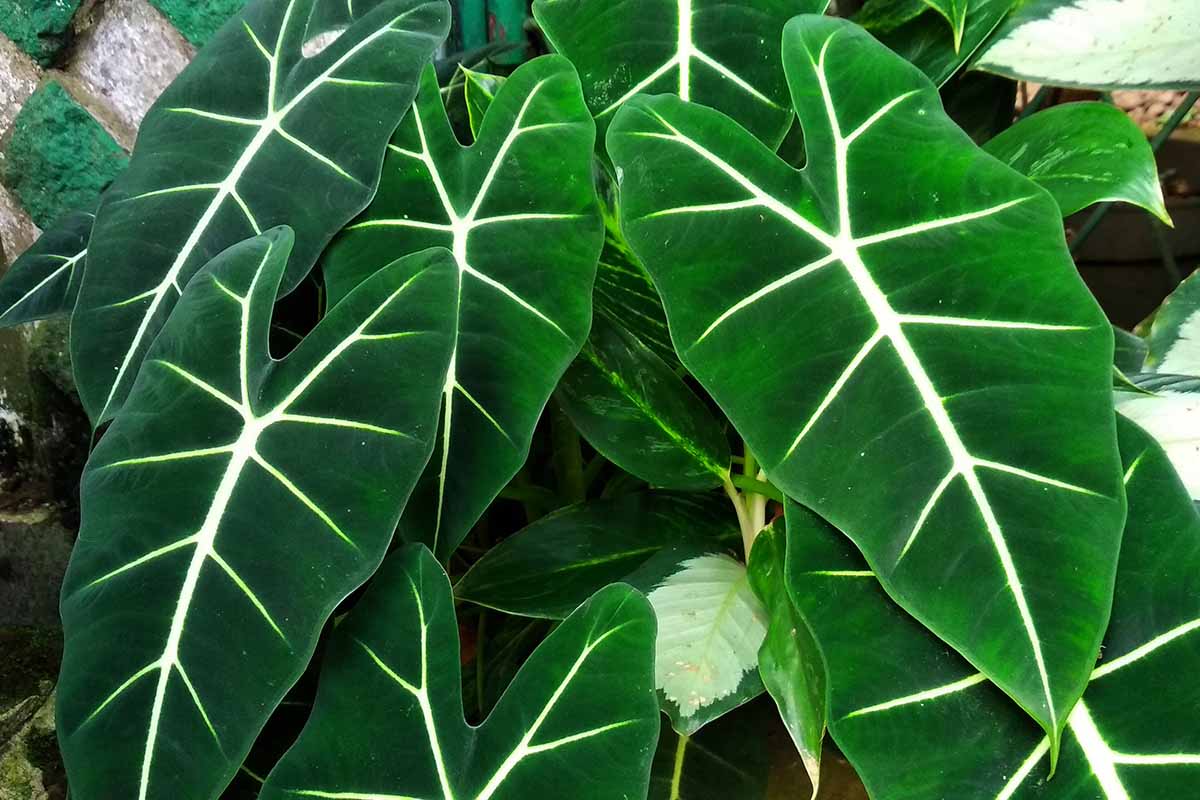
But for someone who’s ready to do a little more, who has already succeeded with a less needy plant, alocasia could provide that modest step up you’re looking for.
And if you’re mindful of its handful of non-negotiable requirements, it will create a vibrant, topical allure.
Are you already a fan with experience to share? Do you still have questions? Kindly add your input via the comments section below.
For information on other dramatic houseplants you might want to grow, check out these guides next:

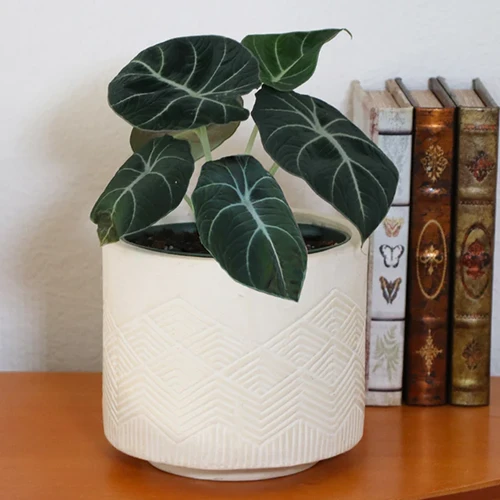
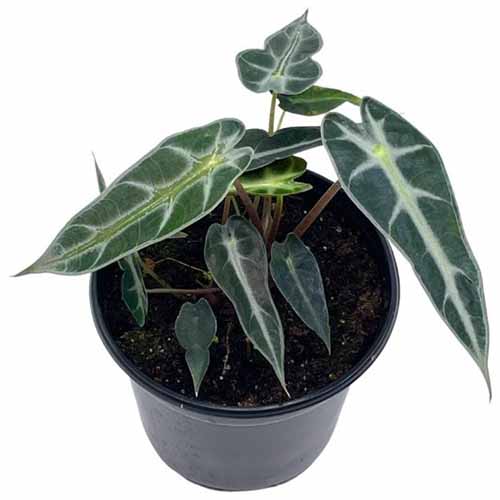
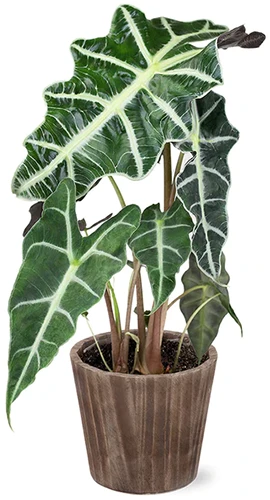
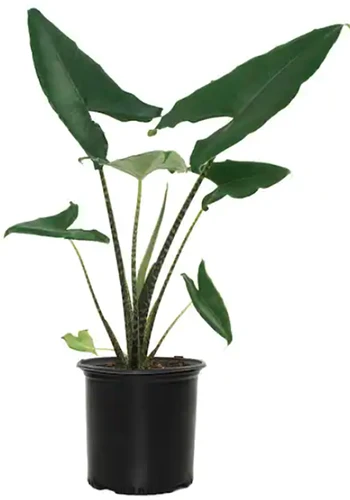
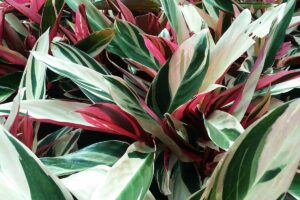
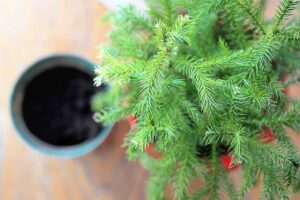
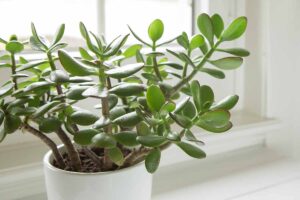
I have a mystery plant I cannot for the life of me identify.
Maybe you can help.
I attached a picture.
Also, the sap is blood red when you cut a fresh leaf.
Thank you,
Thanks for your message, Paula. Our writer Kristine has identified this plant as a philodendron, most likely P. erubescens ‘Imperial Red.’